Iran calls Gaza truce a result of resistance, vows continued support
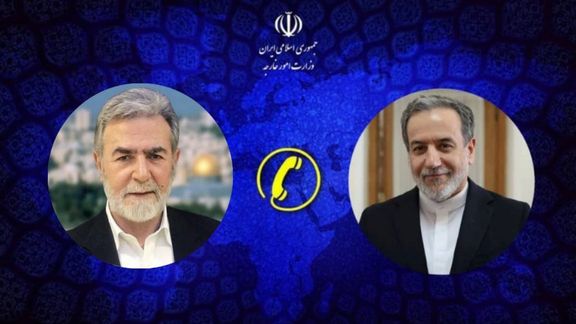
Iran's Foreign Minister Abbas Araghchi on Saturday underlined Tehran's "steadfast" stance in supporting the Resistance Front against Israel.

Iran's Foreign Minister Abbas Araghchi on Saturday underlined Tehran's "steadfast" stance in supporting the Resistance Front against Israel.
Speaking in a Saturday phone conversation with the Secretary General of the Palestinian Islamic Jihad, Araghchi said the recent ceasefire deal was a result of the Palestinian people's 15-month struggle against Israel.
"This resistance ultimately forced the (Israeli) regime to surrender and accept the ceasefire agreement," Araghchi said, according to the Iranian Foreign Ministry's readout of the call.
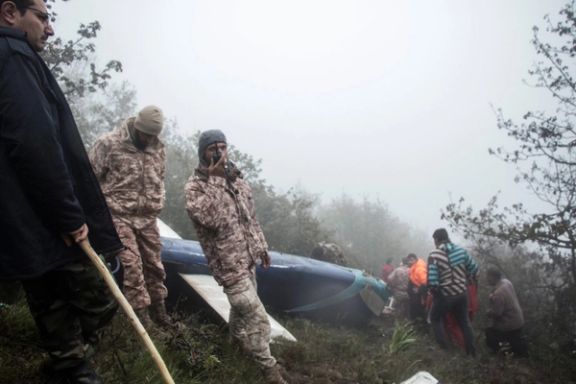
The Iranian Armed Forces released a statement on Saturday, rejecting any suggestion that the helicopter crash involving President Ebrahim Raisi was caused by anything other than bad weather.
This comes after an interview with a family member of Raisi cast new doubts on the official explanation of an accident.
“These claims are far from the truth and appear to be either a result of ignorance or presented with particular intentions,” the statement said. It emphasized that “The cause of the helicopter crash that led to the martyrdom of Ayatollah Raisi and his companions was solely ‘the complex weather and geographical conditions of the area.’”
On May 19, 2024, a helicopter crash in northwestern Iran killed everyone on board, including President Ebrahim Raisi, Foreign Minister Hossein Amir-Abdollahian, and several others. The president was returning from a visit to a dam project, with three helicopters carrying the official delegation. The other two helicopters completed their flights without issue.
On Friday, Mojtaba Mousavi, the brother of Mehdi Mousavi, head of Raisi’s security team, said in an interview that his brother had been opposed to the trip to the Republic of Azerbaijan border but had to proceed under pressure from the president’s office.
Speaking to the Iran24 website, Mojtaba said: “Seyyed Mehdi did everything he could to cancel the trip but couldn’t. He even sent a formal letter, with a copy to the IRGC commander, saying that the IRGC Protection Unit opposed the trip but, as part of its duty, would accompany the president.”
He added that Gholamhossein Esmaeili, Raisi’s chief of staff, had insisted that Raisi is determined to make this trip.
Mojtaba recalled his brother saying: “Where should I take him? To the zero-point of the border? They have surveillance over Iran; it’s near Israel’s neighbor, Aliyev’s territory.”
Iranian officials and political figures have previously raised the possibility of intentional sabotage.
Last month, Iranian lawmaker Kamran Ghazanfari accused the United States, Israel, and Azerbaijan of plotting the crash. Speaking at a conference, he rejected the weather-related explanation, calling it “implausible.”
“Everyone would laugh at the officials’ explanation that Raisi’s helicopter crashed due to weather conditions and dense clouds,” he said. He hinted at an assassination plot involving foreign powers.
The US State Department has denied any involvement. Spokesperson Matthew Miller said in May that Iran had sought help after the crash but said logistical constraints prevented the US from assisting. “We were asked for assistance by the Iranian government,” Miller said in May. “Ultimately, largely for logistical reasons, we were unable to provide that assistance.”
Leadership rivalries and whispers of political sabotage
Beyond accusations of foreign sabotage, some Iranians have pointed to internal rivalries. Mehdi Nasiri, a former editor of the hardline Kayhan newspaper, suggested Raisi’s death might have been tied to succession plans for Supreme Leader Ali Khamenei.
Nasiri speculated that Raisi’s crash could have been orchestrated by those backing Mojtaba Khamenei, the Supreme Leader’s son, as his father’s successor. “In the last session of the previous Assembly of Experts, representatives spoke about Mojtaba Khamenei’s leadership, which was met with reactions from figures like Raisi and others,” Nasiri said. He noted that Raisi’s death coincided with leadership changes in the Assembly, including the removal of figures opposing Mojtaba’s succession.
The Assembly has the constitutional power to determine Iran's next Supreme Leader.
The deaths of Raisi and others, such as Hamas leader Ismail Haniyeh in Tehran, have raised fears of heightened threats to Iran’s leadership from both foreign and domestic sources. While Israel has denied involvement in Raisi’s crash, speculation persist. An unnamed Israeli official told Reuters in May, “It wasn’t us.”
Despite denials, figures like Ghazanfari continue to claim foreign interference, reflecting the tensions in Iran’s complex relationships with its adversaries.
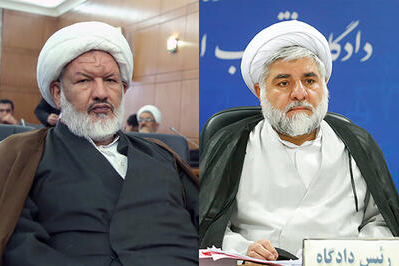
Two Supreme Court judges were shot dead in Tehran on Saturday, state media reported, in a rare deadly attack on senior officials which remains largely unexplained.
Mohammad Moghiseh and Ali Razini, both clerics, were named as the victims. Initially, reports suggested that a third judge had been targeted, but this was later denied by the Judiciary.
State media added that the assailant committed suicide after the shooting.
IRGC-affiliated Fars News reported that the attacker was a staff member responsible for refreshments at Iran's judiciary headquarters who used a handgun in the attack.
The Judiciary Media Center, however, issued a different account regarding the incident suggesting the assailant entered from outside.
"This morning, an armed infiltrator at the Supreme Court carried out a premeditated assassination targeting two brave and experienced judges renowned for their fight against crimes against national security, espionage, and terrorism."
"As a result of this terrorist act, two dedicated and revolutionary judges—steadfast in their defense of public security—were killed."
Iran's Supreme Court counts dozens of judges among its ranks.
The shooter was not involved in any cases in the court nor had been inside as a visitor, the outlet added, saying he died by suicide before police could apprehend him.
ILNA news also reported that several members of staff at Tehran's Courthouse, or Palace of Justice, were arrested on the prosecutor's orders, without elaborating.
"Over the past year, the Judiciary has undertaken extensive measures to identify, pursue, arrest, and prosecute agents and elements affiliated with the despised Zionist regime," ISNA News reported, saying Razini was previously targeted in what it called a terrorist assassination attempt.

A ceasefire deal announced this week between Israel and Hamas signals a defeat for the Palestinian militant group's main backer Iran, a former hostage in Tehran who also influenced the ceasefire negotiations told Iran International.
Nizar Zakka, head of Hostage Aid Worldwide, was abducted in 2015 by the Islamic Revolutionary Guard Corps (IRGC) after attending a conference in Tehran.
The US-Lebanese dual national was locked up four years in Iran’s notorious Evin prison, spending 18 months in solitary confinement, despite being officially invited to the country by a Vice President at the time.
Zakka was released June 2019 in exchange for Negar Qods Kani, an Iranian prisoner in the United States.
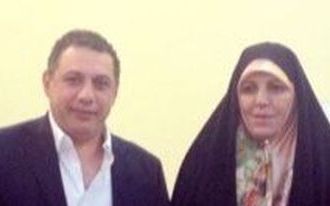
“The whole concept of hostage taking has been created and developed by the Islamic Republic of Iran. They (Iran) have built their foreign policy based on hostage taking,” said Zakka on this week’s episode of Eye for Iran podcast.
Hamas and Iran - which arms, funds and trains the Palestinian militant group - had high hopes for the October 7, 2023 attack on Israel which killed 1,200 soldiers and civilians and saw the abduction of 250 foreign and Israeli hostages.
Both framed the deadliest day in Israel's history as the beginning of the end of their hated enemy. But after Israel's fearsome incursion into Gaza devastated the enclave, killing nearly 45 thousand Palestinians, and air strikes pounded Iran and its allies for 15 months, Zakka says Iran is unlikely to view hostage-taking so favorably.
“It's a big lesson that (hostage diplomacy) will not work,” said Zakka.
One of Hamas senior leaders Khalil al-Hayya characterized the ceasefire deal as success for the group, defining it as a "historic moment."
"Our people have thwarted the declared and hidden goals of the occupation. Today we prove that the occupation will never defeat our people and their resistance,” al-Hayya said in a televised speech from Qatar.
Zakka said in fact Iran and its proxy lost their ability to negotiate with people's lives the moment a ceasefire was reached.
It is no coincidence that hostages are at the center of the conflict between Hamas and Israel, Zakka said, as Hamas is carrying on a tradition from the inception of the Islamic Republic after revolutionaries in 1979 seized the US embassy and dozens of US hostages in Tehran in 1979.
The Islamic Republic has for nearly five decades sought to trade foreign detainees with governments in exchange for prisoners or economic and political concessions.
Tehran's brief jailing of an Italian journalist last month, ongoing imprisonment of two French nationals and the recent death of a Swiss national in custody on espionage charges has underscored the issue. Iran denies it engages in hostage diplomacy.
The failure of Iran’s militant proxies and the agreement that on principle has been reached between both sides demonstrates that Tehran’s foreign policy tactic doesn’t have the sway it used to, according to Zakka.
Iran sees it otherwise. The IRGC referred to the ceasefire as a victory for Gaza and the Palestinian people.
A blood-splattered mural depicting Israeli hostages in Gaza was unveiled in Tehran last year with the message: “No hostage will be released,” written in Farsi and Hebrew. Now, it appears, they will.
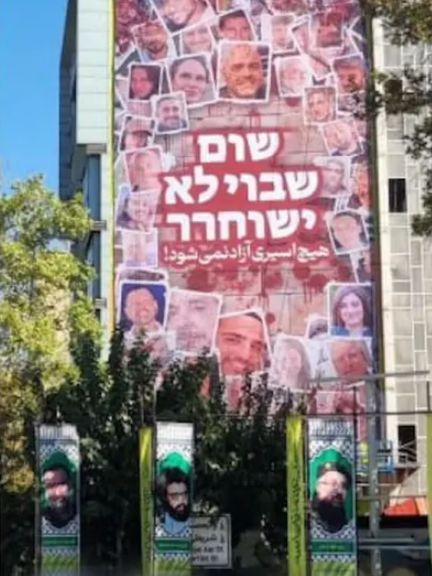
If the Israeli cabinet and government formally approve the ceasefire, the first six-week phase will take effect on January 19.
The deal reached Wednesday would see the release of 33 hostages over the next six weeks in exchange for hundreds of Palestinians imprisoned in Israel. The Jewish state would pull back in parts of Gaza allowing the return of displaced Palestinians along with humanitarian aid.
Ceasefire role
“I am so happy. I love it. I did a lot. I worked a lot. Yesterday on Israeli TV Channel 12, they said that the ceasefire was made because of my advocacy and my work," said Zakka.
Zakka was in direct contact with President-elect Donald Trump, encouraging him to take a firm stance to bring back all the hostages, not just Americans among them.
Trump, Zakka said, listened.
“I asked President Trump to pressure Bibi Netanyahu,” said Zakka, "We explained to President Trump that if he would accept to make a deal for only four Americans and leave the rest behind, that would be like signing the death certificate for all the other hostages in Gaza. I told Trump that Bibi Netanyahu will kill everybody."
The conversations between Zakka and Trump took place over WhatsApp and email, he said.
Zakka said the bombing of Gaza also puts the lives of Israeli hostages in jeopardy too. When he was imprisoned in Iran, he said he used to pray for the Americans to bomb the IRGC facilities but with the devastation in Gaza, he realized that would put innocent lives at risk too.
"I feel so much for these people because they are bombed by Israel, their own country, and then taken hostage by Hamas, using them as a human shield."
Ending hostage diplomacy
The American-Lebanese technology expert and former businessman has made it his life's mission to make sure Iran does not engage in future hostage-taking and helping save the lives of other hostages.
Speaking on Eye for Iran, Zakka was in Damascus searching the underground cells for Austin Tice, a US journalist who disappeared during ousted President Bashar al-Assad’s rule.
He is now considered missing, and Hostage Aid Worldwide believes he is being held against his will in a safehouse. Zakka declined to elaborate to protect the investigation.
Zakka is also lobbying the United Nations (UN) to strengthen the International Convention Against the Taking of Hostages to include punishments for violators and for the UN manage talks with countries that engage in hostage diplomacy.
When Iran detained Italian reporter Cecilia Sala last month, for example, Italy negotiated directly for her release.
“We cannot let the Iranian regime negotiate with each country separately, take hostages, and get away with it," Zakka said. "We need to stand together as an international community against hostage-taking.”
To watch the full episode of Eye for Iran featuring Nizar Zakka, you can watch it on YouTube or listen on Spotify, Apple, Amazon, Castbox or any major podcast platform.
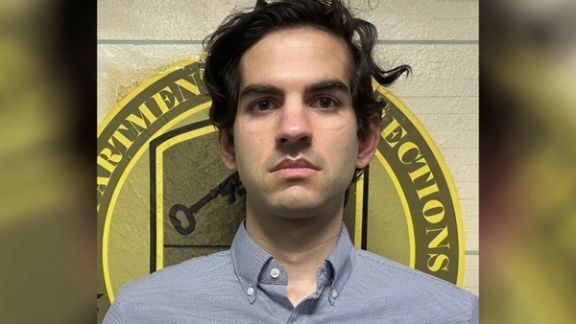
A CIA employee accused of leaking classified information regarding Israel's October plans to attack Iran pleaded guilty on Friday to charges of willfully retaining and sharing national defense information, according to the US Department of Justice.
Asif William Rahman, who had been employed at the US intelligence agency since 2016, confessed to illegally downloading, printing, and distributing classified materials on multiple occasions, including several incidents in 2024.
The FBI apprehended Rahman in Cambodia in November, later transferring him to federal court in Guam to face charges.
The leaked information pertains to intelligence from US satellites detailing preparations for an Israeli air assault on Iran, aimed at retaliation for an October 1 missile attack on Israel.
Two US intelligence documents dated October 15 and 16, originally restricted to the "Five Eyes" intelligence-sharing alliance (Australia, Canada, New Zealand, the United Kingdom, and the United States), appeared on the pro-Iran Telegram channel Middle East Spectator as Israel geared up to respond to the barrage of 181 ballistic missiles.
The platform’s X account lists its location as the Islamic Republic of Iran.
In a public statement, Middle East Spectator denied any direct connection to the original source of the leaks, saying, “we assume [it to be] a whistleblower within the US State Department.”
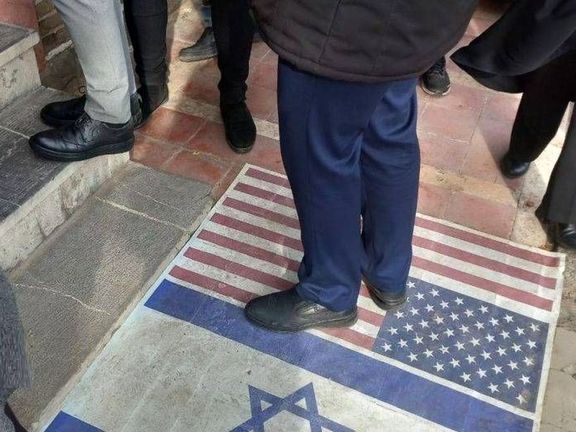
A US flag that had previously been painted on the ground in the courtyard of the Iranian president's office to be trampled by visitors, has now been removed.
The flag was painted there during the Raisi administration but was erased a few weeks ago under Masoud Pezeshkian's term, Ensaf News reported on Friday.